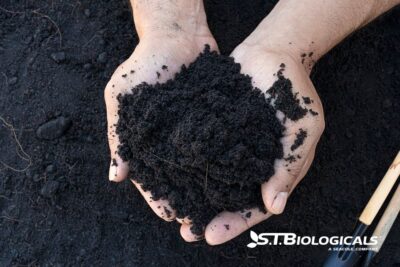In regenerative agriculture, timing isn’t just a detail. It’s a strategy. For Midwest growers, the window between mid-August and mid-September offers a critical opportunity to establish cover crops that build soil health, suppress weeds, and cycle nutrients before winter dormancy. But this window is narrow, and aligning it with cash crop harvests or interseeding methods requires thoughtful planning.
Certain cash crops work better than others for timely cover crop establishment. The design of your crop rotation program has an enormous effect on the success of your cover crops. Incorporating livestock into the system greatly enhances both ecological and economic benefits. Whether you’re managing silage corn, early soybeans, or small grains, the timing game is one you want to win.
Why Timing Matters for Cover Crops
Cover crops need warm soil, sunlight, and moisture to establish strong root systems and biomass before winter. Planting in mid-August to mid-September maximizes fall growth, which translates into:
● Higher biomass for erosion control and weed suppression
● Deeper root penetration for compaction reduction
● Greater nutrient scavenging and retention
● Improved microbial activity and mycorrhizal associations
According to research done by Hirsh and Weil in 2015, each day of growth in August is worth three to four days in October in terms of biomass accumulation and nitrogen uptake. Their research found that early-planted cover crops captured up to 250 lbs/acre of nitrogen, compared to negligible uptake from late-planted covers.
Cash Crops That Allow Timely Cover Crop Planting
To hit the mid-August to mid-September window, you have to either harvest early-maturing cash crops or interseed cover crops into standing crops. The most feasible early harvest options for Midwest systems are:
● Silage corn
● Wheat
● Many crops grown on contract for the processing market
It’s important to note that cover crops can be intersown into all crops with a little planning and a Hi-Boy or drone technology. That said, let’s look at the major cash crops and fall cover crop strategies for optimum biomass and erosion control.
When you’re planning cover crops, you also have to plan herbicide applications. If you’re applying a pre-emerge or broadleaf herbicide in your corn, there will be residual chemicals in the soil. This will be detrimental to the health of broadleaf cover crops. Corn with a good canopy shouldn’t a full rate or need any herbicides, so it’s a matter of good timing.
Silage Corn Cover Crop Timing
Planning silage corn into your rotation opens a wide window for fall establishment of cover crops. In the Midwest, silage corn is typically harvested between early and mid-September. That depends on the hybrid variety, planting date, and weather conditions.
You can avoid losing any topsoil or excess nutrients, especially nitrogen, by immediately planting cover crops. Corn takes up nitrogen only during the vegetative stage. Once it starts to fill out the ears, the nitrogen is coming from other parts of the plant, not the soil. That’s why you begin to see yellowing in the older leaves.
The best cover crops to plant after corn are cereal rye, triticale radish, and turnips. A mixture of all four will give you the best covers and nutrient scavenging. The cereal rye and/or triticale will hold on to nitrogen longer than the radish and turnip, which winter kill.
While many of the grasses may not winter kill, they are excellent in no-till systems and for spring forage. When you incorporate livestock in any crop rotation, you improve yield and soil health.
Other Fall Cover Crop Strategies for Optimal Biomass Production
Summer cover crops thrive post-wheat. Early harvesting in later July or early August means you have time to amend the soil with compost, biochar, and manure before planting cover crops. In a no-till or regenerative system, the decomposing wheat stubble will cycle nutrients back into the soil for the cover crops.
The best cover crops after wheat are buckwheat, cowpeas, sorghum-sudangrass, and brassicas. A mix is even better. These crops can handle the heat of summer and even thrive. If you happen to be planting covers in a drought, cowpeas will hold their own. Buckwheat germinates very rapidly and begins to cover the soil in just three to five days. It is a great weed suppressor, but it’s not as heat tolerant as cowpeas, which are native to the southern US and sub-Saharan Africa.
Planning your soybean harvest around cover crops will mean planting the earliest maturing varieties. That may give you an economic boost if you’re first to market. Cover crops after soybeans will have less biomass, but winter-hardy species such as cereal rye, triticale, and winter wheat will provide erosion control and good nitrate foraging.
Incorporating a grazing rotation in your fields in early spring will partially suppress that new spring growth. But it isn’t considered a reliable termination method if you’re going to apply for crop insurance. But as a regenerative farmer, your insurance is the quality of your soil. And that’s what adaptive multi-paddock grazing will give you.
There are other combinations of cash and cover crops that optimize your land, capital, and yield. Visit our blog to learn more.
Crop Rotations That Give the Most Bang for Your Cover Crop Buck
Designing rotations that allow for early cover crop planting requires balancing agronomic feasibility with regenerative outcomes. Here are three rotation models suited for Midwest systems:
Wheat ➡️ Cover Crop ➡️ Soybeans
Wheat is harvested in July and August, which gives you a long window to prepare your fields for optimum biomass production from the cover crops. You enhance biodiversity, break pest and disease cycles, and reduce the need for synthetic inputs. If you incorporate clovers, buckwheat, and other legumes in your cover crops, they’ll fix nitrogen for early soybean growth. According to the Midwest Row Crop Collaborative, integrating small grains and legume cover crops into corn-soy rotations improves water quality, reduces fertilizer needs, and spreads labor throughout the season.
Silage Corn ➡️ Cover Crop ➡️ Corn or Soybeans
Silage corn also gives you a wide window for covers to gain biomass. Planting rye and radish in a cover crop mix is a great way to keep nutrients in your field all winter.
Daikon radishes, turnips, and other brassicas are especially good for soils on the mend because they have long tap roots that break up dense soil. Brassicas don’t have relationships with mycorrhizal fungi, beneficial for almost all other crops, so a mixed cover crop planting that also includes legumes and grasses will be the most beneficial.
Although it isn’t a common commodity crop rotation yet, regenerative farmers may now be looking at the higher profit margins for growing for the food processing market. Crops for canning and freezing for human consumption are a growing segment of the commodity growers’ portfolio. There are sound economic reasons for this. Consider lower price volatility, value-added opportunities, supply chain resilience, and the sustainability demands of food companies.
Specialty Crop ➡️ Cover Crop ➡️ Small Grain
This rotation supports pollinators, improves soil structure, and breaks pest and disease cycles. Many specialty crops are harvested early in the season, which gives a large window for cover crops. Strategic entry points into this lucrative market include specialty corn or soybeans for milling, oil extraction, or fermentation.
There is a growing demand for high-protein food products such as wheat varieties for flour, lentils, and chickpeas. Regenerative brands are looking for suppliers, and now is a good time to consider a change in crop production.
You’ve planned the next three years, including cover crops. But is that the end of the story? Climate plays an important part in the success of your plan. As they say, life gets in the way of the best plans.
One of the best ways to climate-proof your operation is to diversify. Cover crops sometimes feel like an expense with no return, but your soil will improve every year. Another investment that does have a better return on investment is livestock in your cropping rotations.
Livestock Integration: Optional but Powerful
While not essential, livestock can dramatically enhance the value of early-planted cover crops. Managed grazing of cover crops offers:
● Nutrient Cycling: Manure returns nitrogen, phosphorus, and potassium to the soil.
● Biomass Utilization: Grazing converts cover crop biomass into protein and income.
● Soil Health: Hoof action lightly incorporates organic matter and stimulates microbial activity.
Research from Chico State’s Center for Regenerative Agriculture shows that reintegrating livestock into cropping systems improves soil microbial density, reduces input costs, and increases carbon sequestration.
Research shows managed grazing, “provides significant benefits for farmers who use cover crops and no-till methods as the animals can graze the cover crops while lightly integrating their manure into the soil with their hooves.”
For the farmer who’s just beginning to think about reintegrating livestock, contact our livestock team experts at ST Biologicals. There are a number of grazing strategies, and every farm is unique and requires a unique solution. Fall grazing, spring grazing, and grazing with multiple species of livestock are just three of many options. There is a great deal of environmental and economic potential in bringing livestock back to your ag operation.
Livestock reintegration aligns with broader regenerative goals like biodiversity and carbon drawdown.
Planning Considerations for Successful Cover Crop Rotations
To maximize the benefits of early cover crop planting, consider the following:
● Herbicide Residuals: Plan ahead to avoid injury to cover crops.
● Seeding Method: Drilling ensures better seed-to-soil contact; aerial seeding may be viable for interseeding.
● Moisture Management: Covers compete for water, critical in dry years.
● Termination Timing: Align with next crop needs and grazing plans.
These factors are especially important in systems aiming for reduced tillage, compost synergy, or biochar incorporation.
Adding cover crops to your cash crop rotations doesn’t have to be difficult. It does require planning, much the same way a good chess player plans three or more moves ahead. Not only are you increasing diversity and future-proofing your ag operation, you’re also ahead of many of your neighbors in securing profitable contracts for high-profit crops.
It’s a win for the soil and a win for your financial security. Contact our team to find out how you can become the ag leader in your area. We’re here to help you succeed. When soil speaks, we listen.
Scholarly Citations
● Hirsh, S., & Weil, R. (2015). Cover Crops Growing in August: Nitrogen Capture and Soil Health. University of Maryland Extension
● Midwest Cover Crops Council. (2023). Cover Crop Recipes and Selector Tools. MidwestCoverCrops.org
● NASA Earth Observatory. (2022). Cover Crop Adoption and Yield Impacts in the Midwest. NASA Harvest Study
● Chico State Center for Regenerative Agriculture. (2022). Livestock and Crop Integration. CSU Chico
● MSU Extension. (2024). An Introduction to Regenerative Field Crop and Grazing Systems. MSU CRA

